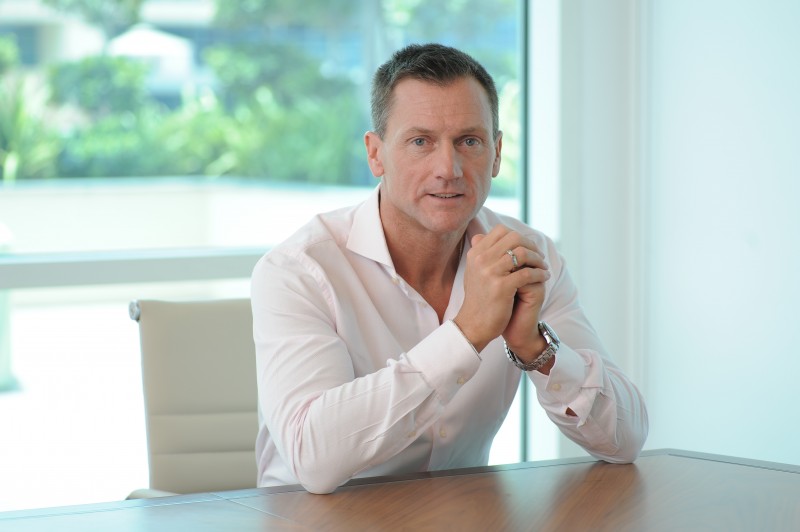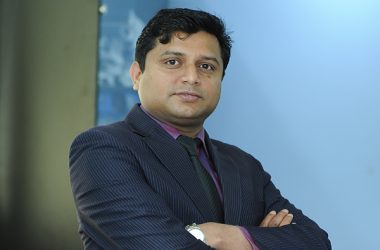With some of the UAE’s most celebrated buildings and developments in its portfolio, including Dubai Internet City’s award-winning Business Central Towers, Etihad Museum and the recent renovations of DXB’s Terminal 1 and Dubai Mall, Al Shafar General Contracting (ASGC) has cemented its regional reputation for excellence in its 28-year existence.

Joining ASGC in January, Fuchs has been brought on board to design and execute a comprehensive digital transformation strategy that can assure the company retains its edge in the ever-competitive construction market. He has been working in the Middle East for just over two years, and has already developed a strong attachment to the region. “I’d been here many times previously on business when I was working in Europe, and I always harboured ambitions to live here,” he says. “I’m fascinated by the culture, mentality and opportunities that exist in Dubai and the region.”
Having worked for a range of household names, including McDonald’s and GE, Fuchs joined ASGC with a clear understanding of how high the bar can be set within major corporations. However, he had never previously worked in the construction industry, and was keen to take on a new challenge that would force him to bring fresh ideas to the table. “I’ve had the opportunity to lead a range of transformational projects prior to joining ASGC, as well as building aspects from the ground up,” Fuchs says. Joining from United Arab Shipping Company in Kuwait, where he had worked as CIO, Fuchs was buoyed by ASGC’s culture and ambition to succeed in its delivery of technology.
He is also the first figure to ever be appointed in the CIO role at the company, but he says that he does not feel the pressure as a result, and is clear about how he can win support in his early days. “I only feel positive pressure to succeed,” he says. “I think it’s important that I effectively prioritise quick and mid to long-term wins.”
The firm’s chief executive, Bishoy Azmy, has been particularly vocal about the need for ASGC to capitalise on a range of modern technologies. “Bishoy has made it very clear that if we don’t change the way we do things as a company through digital transformation, then we run the risk of being irrelevant in ten years’ time,” Fuchs says. “He’s especially excited by the use of business intelligence and analytics tools that can help us with our decision-making – by predicting outcomes and making quicker choices. He wants information that lets us know where we stand at any point in time, and helps us to learn from our mistakes.”
Fuchs and Azmy have worked together to develop a roadmap for ASGC to transform over the coming two years, with “aggressive” timelines driving its execution. “Bishoy is a pushy CEO, and is great to work with because he is aggressive in a positive way,” Fuchs says. “That means he is determined to achieve our objectives in timeframes that will help the company make huge strides.”
Nonetheless, Fuchs has his feet firmly on the ground about what the company needs to do in order to progress. “In a sense, digital transformation is the buzzword of the moment, and too many people try to digitalise too much all at once,” he says. “In my opinion, it’s a case of satisfying two criteria – what we can optimise in terms of our core business, and what we can do completely differently.”
The prospect of automating various aspects of ASGC’s operations has already begun to whet Fuchs’ appetite. While physical labour remains the cornerstone of the construction industry, the planning and strategy aspects that go on behind the scenes have huge potential to be transformed by technology. “Ultimately, one of our most important aims is for technology to help us to reduce the amount of time and labour that is dedicated to a project,” he says. “There really is a fantastic chance for technology to optimise the construction industry. My dream is to have the cost estimation and tendering processes driven by technology, rather than through manual calculations. If automated, these processes can be completed in just 50 minutes.”
In addition to the Group’s flagship construction business, it also operates a range of divisions across the steel, pre-cast concrete, electro-mechanical engineering and interior fittings spaces, and Fuchs believes there is huge potential to automate and enhance a variety of processes in these areas. “I would be very interested in looking at how we can optimise the production of pre-cast, as that’s a very important line of business for us,” he says.
Health and safety has been identified as a key priority in ASGC’s roadmap, and Fuchs has already developed a strong sense of how the company can combine a variety of technologies to reduce the risks that employees are exposed to. “It’s a top priority for us,” Fuchs says. “Millions of man hours are spent on site, so we have to pay a lot of attention to that to ensure that our employees and stakeholders’ wellbeing is considered. As well as using the right technology, we have to educate staff about its use and about general best practices on-site.”
Video tools will have an important part to play in raising standards at the company, and Fuchs believes its combination with analytics tools has huge potential. Throw in a marriage of wearable technology and sensors for on-site workers, and there is huge potential for technology that provide vast insight and enhanced procedures for on-site workers. “This will allow us to make all kinds of decisions,” he says. “Are people congregating in the right areas, or on parts of a site where they are not authorised to be? Are they doing tasks that they have not been trained to carry out? We can improve the safety of our staff, as well as streamlining production through this kind of insight.”
Education, of course, remains an important piece of this jigsaw. The ability to inform on-site workers not only of health and safety practices, but also of new information that can impact their operations, is one that Fuchs craves. The use of on-site kiosks to communicate directly with employees is another method that he has mooted, while he is also a believer in exploiting the rise of personal devices in the workplace. “The widespread use of personal mobile devices opens up all kinds of opportunities for how we can educate users,” he says.
Determined to ensure ASGC’s technology strategy is driven by best practice, Fuchs will be keeping a close watch on international markets to ensure a smooth course for the firm. “We can benefit from learning from the mistakes of others,” he says. “The US and Europe have often led the way in terms of technology adoption, and they serve as examples to follow.” However, Fuchs believes that the Middle East region has an opportunity to leapfrog these countries in its drive to adopt new technology. “If you look at Eastern Europe and its adoption of telecoms, it has been able to overtake some countries through the changes it has made. The same absolutely applies to the Middle East as a whole.”





